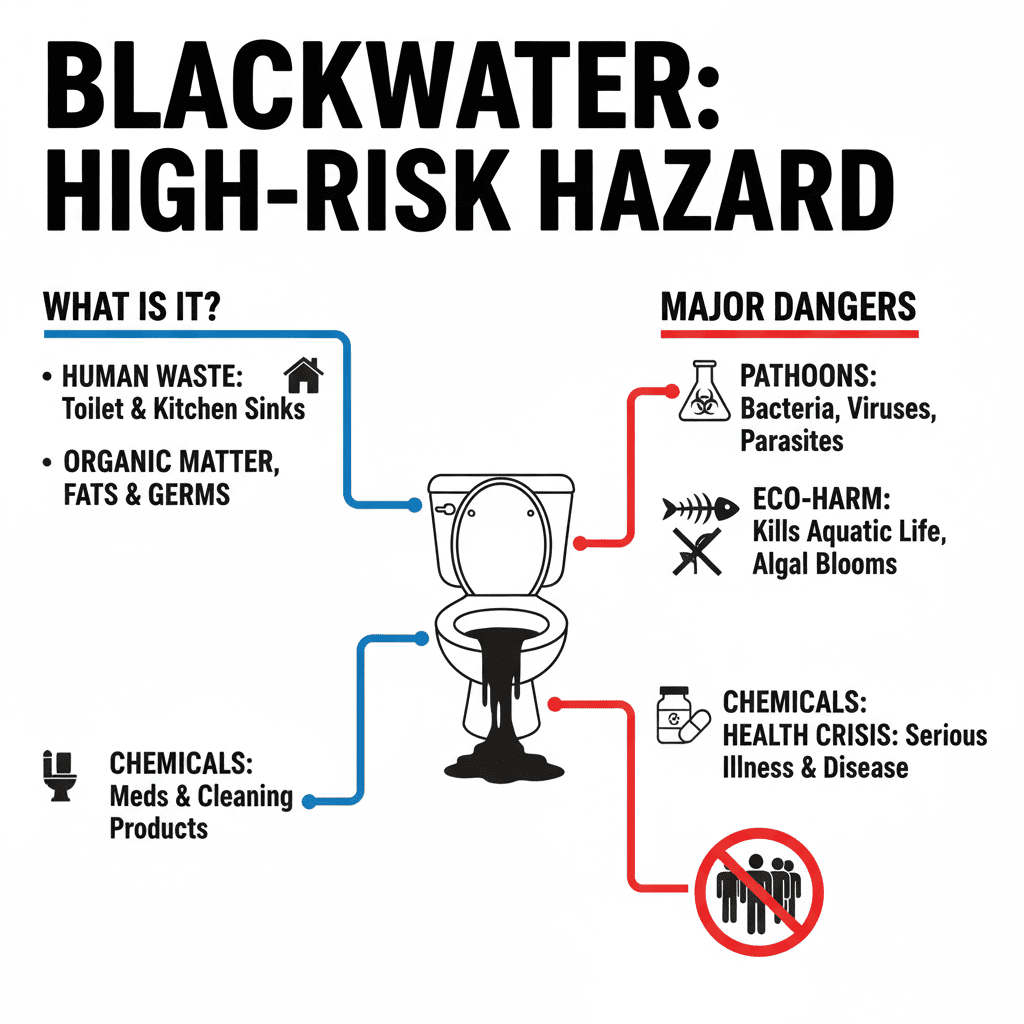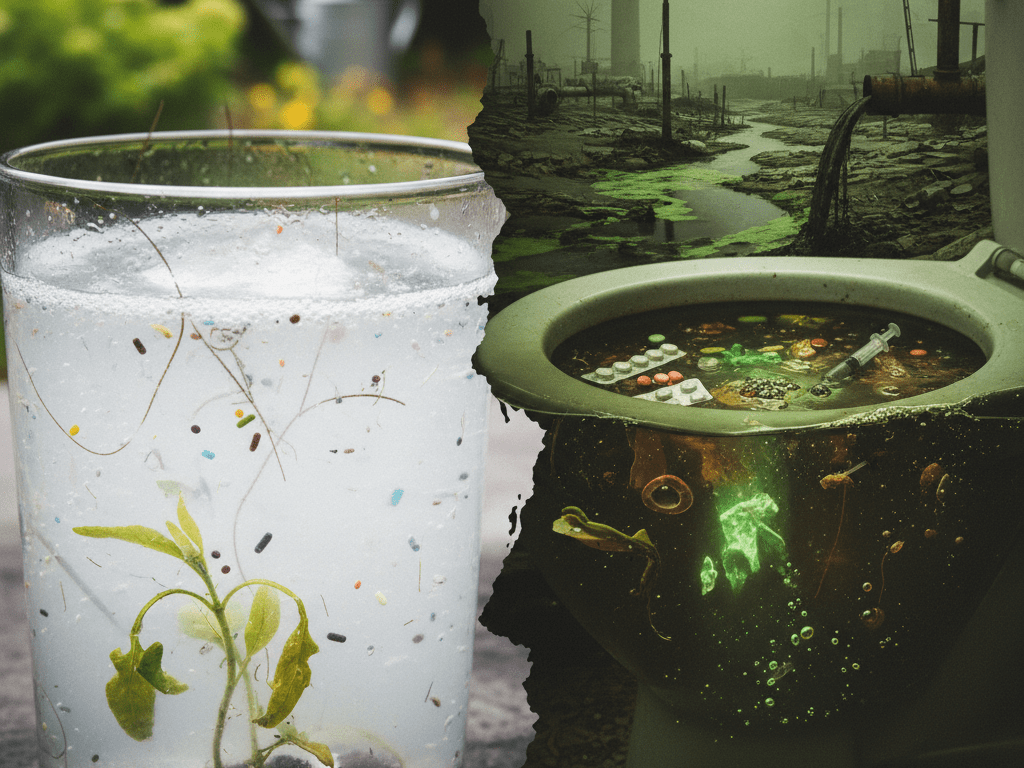When we think about water, we often picture a pristine, life-giving force. However, not all water is created equal, especially within our homes and communities. Two terms frequently discussed in the context of wastewater management are “greywater” and “blackwater.” While both are forms of wastewater, understanding their distinct characteristics and the dangers associated with their contamination is crucial, particularly in places like Hobart, Tasmania, where environmental preservation is paramount.
Greywater: The Lesser of Two Evils (But Still an Evil)
Greywater is generally defined as wastewater that has not come into contact with fecal matter. This includes water from showers, bathtubs, sinks (excluding kitchen sinks if they’ve handled food waste), and washing machines. Many see greywater as relatively harmless and even reuse it for irrigation with minimal treatment in sustainable living practices
However, it’s a mistake to consider greywater harmless. It can contain a variety of contaminants, including:
- Soaps and detergents: These can alter soil pH and introduce chemicals that harm plants and aquatic life.
- Hair and skin particles: These contribute to organic load and can clog drainage systems.
- Lint and microplastics: From washing clothes, these can accumulate in the environment.
- Pathogens: While less concentrated than in blackwater, bacteria and viruses can still be present, especially from personal hygiene activities. Even a small amount of fecal contamination can elevate greywater risk significantly.
The dangers of untreated greywater contamination primarily lie in its potential to:
- Harm ecosystems: Excess nutrients from soaps can lead to algal blooms in waterways, depleting oxygen and killing aquatic life.
- Contaminate soil: Chemicals can build up, affecting soil fertility and plant health.
- Spread disease: While lower risk, contact with contaminated greywater can still lead to skin irritations or gastrointestinal issues if ingested.
Blackwater: The High-Risk Hazard
Blackwater is the undisputed villain of wastewater, blackwater contains human waste, specifically toilet water. It also often includes kitchen sink water, which contributes a high concentration of organic matter, fats, and potential pathogens from food preparation
The dangers of blackwater contamination are significantly more severe due to the high concentration of:
- Pathogenic microorganisms: This is the primary concern. Blackwater is teeming with bacteria (like E. coli, Salmonella), viruses (like Norovirus, Hepatitis A), and parasites (like Giardia, Cryptosporidium) that can cause a wide range of serious diseases in humans and animals.
- High organic load: This consumes vast amounts of oxygen if released into waterways, leading to severe ecological damage.
- Nitrogen and phosphorus: These nutrients contribute to eutrophication, leading to rampant algal growth and dead zones in aquatic environments.
- Pharmaceuticals and chemicals: Whatever we ingest and excrete, or wash down the drain, ends up in blackwater, including medications, cleaning products, and microplastics.
The consequences of blackwater contamination are dire and include:
- Serious health crises: Outbreaks of waterborne diseases can rapidly spread through communities, causing severe illness and even death. In a city like Hobart, this could have devastating public health impacts.
- Environmental degradation: Contaminated waterways become unfit for swimming, fishing, or drinking. Sensitive ecosystems, such as those found around Tasmania’s coastlines and rivers, are particularly vulnerable.
- Economic impact: Contamination can shut down fisheries, impact tourism, and require expensive remediation efforts.

Preventing Contamination: A Collective Responsibility
Given the risks, effective wastewater management is not just a regulatory requirement; it’s a fundamental pillar of public health and environmental protection. For residents and businesses in Hobart and beyond, this means:
- Proper Plumbing and Maintenance: Ensuring all plumbing systems are correctly installed and regularly maintained to prevent leaks and cross-contamination between greywater and blackwater lines.
- Responsible Disposal: Never disposing of hazardous chemicals, medications, or excessive fats, oils, and greases down any drain.
- Awareness of Septic Systems: For properties not connected to municipal sewage, understanding and maintaining septic systems is crucial to prevent ground and surface water contamination. Regular pumping and inspections are vital.
- Mindful Greywater Reuse: If considering greywater reuse systems, ensure they are properly designed, installed, and maintained to minimize health risks and environmental impact. Always consult local regulations – in Tasmania, there are strict guidelines for greywater use.
- Supporting Infrastructure: Investing in and supporting robust municipal wastewater treatment plants, which are essential for safely processing both blackwater and greywater before discharge.
The difference between greywater and blackwater may seem subtle, but the potential for harm is vastly different. While greywater poses moderate risks, blackwater is a significant public health and environmental hazard. Understanding these distinctions and acting responsibly is crucial for safeguarding our health, protecting our natural environment, and ensuring a sustainable future for communities like Hobart.

